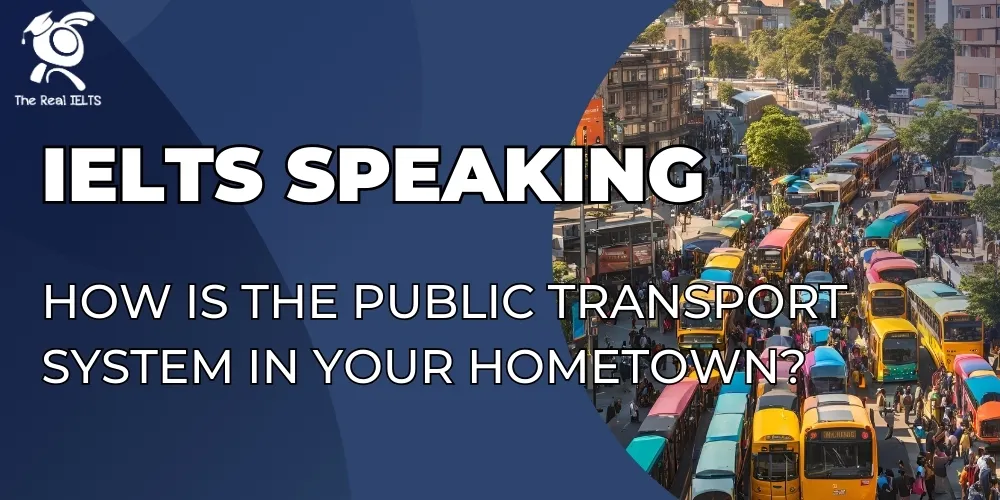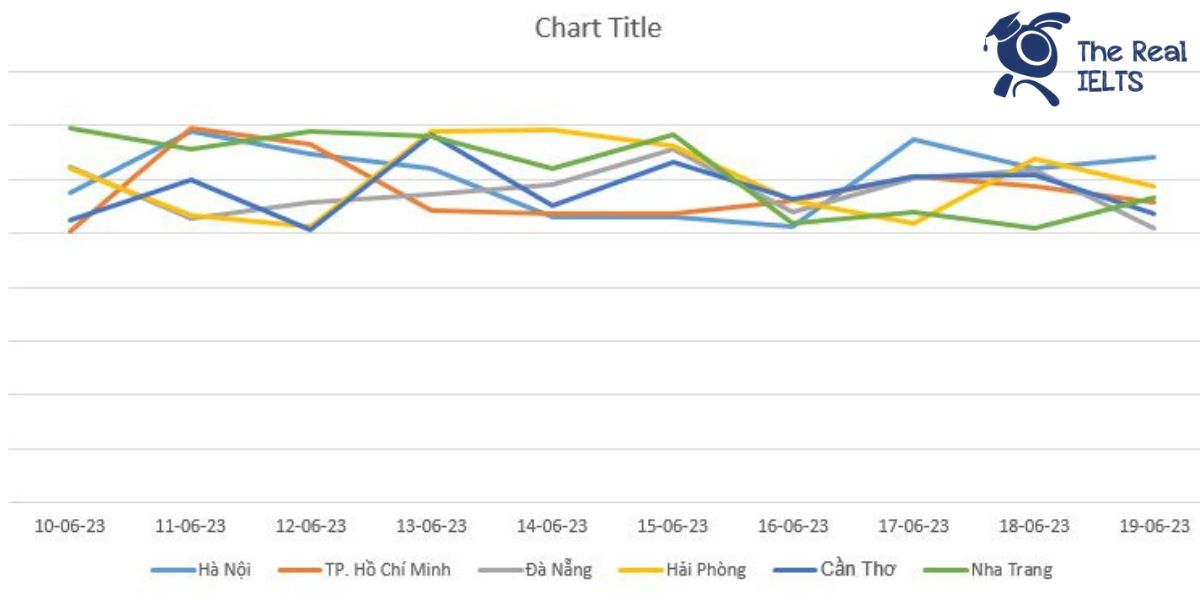Hệ thống giao thông công cộng là chủ đề dễ gây ấn tượng trong IELTS Speaking. Nếu quê bạn có mạng lưới xe buýt, tàu điện tiện lợi, hãy miêu tả sự thuận tiện và chi phí hợp lý của nó.
Đọc thêm các bài luyện thi IELTS khác.
Đọc thêm câu hỏi khác tại: IELTS Speaking Part 1: Introduction and Interview chủ đề Your hometown.
Đọc thêm: IELTS Speaking: What are the most important services available in your hometown?
Câu trả lời cho IELTS Speaking: How is the public transport system in your hometown?
Ví dụ 1
The public transport system in my hometown is moderately developed and serves as a convenient option for many residents. We have a variety of options, including buses, taxis, and ride-sharing services like Grab. However, it’s not as comprehensive as the systems in larger cities, which makes it less reliable for certain groups of people.
Let me start with buses, which are the backbone of public transportation here. The bus network covers most of the main areas in the city and operates from early morning to late evening. The fares are affordable, which makes it accessible for students and workers. However, the buses tend to be overcrowded during peak hours, and their schedules are not always punctual, leading to frustration for daily commuters.
In addition to buses, there are taxis and ride-hailing apps, which provide a more comfortable but slightly more expensive alternative. These services are widely used for shorter trips or when buses aren’t an option. Ride-hailing platforms like Grab are particularly popular because they are convenient and easy to book through mobile apps. They also allow people to track their rides, which adds a sense of security, especially for young adults and travelers.
Despite these options, the public transport system has some limitations. One major issue is the lack of coverage in suburban and rural areas. People living on the outskirts of the city often rely on motorbikes or private vehicles to get around because public transport doesn’t reach their neighborhoods. Another problem is the infrastructure, as some bus stops and terminals are poorly maintained, which discourages people from using these services.
On the positive side, the local government has been working to improve the system. Recently, there have been efforts to introduce electric buses, which are environmentally friendly and aim to reduce air pollution. There are also plans to expand the network to connect more areas within the city, which would be a big help for those living in less accessible places.
In conclusion, while the public transport system in my hometown is functional and provides various options, it still has room for improvement in terms of coverage, punctuality, and infrastructure. If the government continues to invest in and modernize the system, I believe it will become a more reliable and appealing choice for residents in the future.
Ví dụ 2
The public transport system in my hometown is somewhat functional but still has significant areas for improvement. We have a mix of buses, taxis, and ride-hailing services like Grab, but the overall efficiency and convenience of the system vary depending on where you live.
Firstly, buses are the primary mode of public transport here. They are affordable and run on fixed routes that cover most of the city center. However, the system has limitations. For example, buses are often delayed due to traffic congestion, especially during peak hours. Additionally, the frequency of buses isn’t high enough, making it difficult for passengers to rely on them for tight schedules. The conditions on some buses could also be better, as they can be overcrowded and lack proper maintenance.
Aside from buses, many people use ride-hailing services such as Grab. These are incredibly convenient because you can book them directly from your phone, and they provide door-to-door service. However, they are more expensive than buses, so not everyone can afford to use them regularly. Traditional taxis are also available but are gradually becoming less popular due to competition from ride-hailing apps.
One of the biggest issues with public transport in my hometown is the lack of coverage in suburban and rural areas. If you live in these regions, it’s almost impossible to rely on public transport, as buses and taxis rarely operate there. Many residents in such areas have no choice but to use motorbikes or private cars, which adds to traffic problems and pollution.
That being said, there are some positive developments. In recent years, the local government has started investing in better infrastructure. For example, new bus stops have been built, and some older buses have been replaced with more modern, environmentally friendly vehicles. There’s even talk about creating a metro or tram system in the future, which could drastically improve the situation if implemented properly.
Overall, while the public transport system in my hometown is useful for those living in central areas, it still has many shortcomings, particularly in accessibility and reliability. If the government continues to address these issues, I’m hopeful that it can become a much more efficient and convenient system for everyone.
Ví dụ 3
The public transport system in my hometown is relatively basic but functional for most residents. It primarily consists of buses, ride-hailing services, and motorbike taxis, with each option catering to different needs and preferences.
To begin with, buses are the most commonly used form of public transport. They are affordable, making them accessible to students, workers, and lower-income groups. The routes cover major parts of the city, but the network isn’t extensive enough to reach suburban or rural areas. One downside is that buses here are often old and not very well-maintained. Additionally, delays are common, especially during rush hours, which can make commuting frustrating.
For a more convenient option, many people turn to ride-hailing services like Grab or Be. These are highly reliable and easy to use, especially since you can book a ride directly from your smartphone. Motorbike taxis, which are also integrated into these platforms, are particularly popular because they can navigate through traffic more efficiently than cars. However, the cost of ride-hailing services is higher compared to buses, so they are mainly used for shorter trips or in emergencies.
Unfortunately, there are some limitations to the public transport system. One major issue is its inability to meet the needs of people living in less populated areas, where public transport is either scarce or nonexistent. This forces many residents to rely on private vehicles, which contributes to traffic congestion and air pollution. Furthermore, the lack of investment in modern infrastructure, such as metro systems or electric buses, has kept the system from evolving.
On a brighter note, there have been efforts to improve the system. Recently, the local government has introduced plans to upgrade the bus fleet with electric vehicles to reduce emissions and provide a more comfortable experience. They’ve also started improving bus stations and expanding routes to better connect different parts of the city.
In conclusion, while the public transport system in my hometown serves its purpose to some extent, it still faces several challenges, particularly in coverage and modernization. If the government continues to invest in upgrading the system, I believe it could become a more reliable and sustainable option for everyone in the future.
Ví dụ 4
The public transport system in my hometown is fairly basic but serves as a practical option for many residents. It includes buses, motorbike taxis, and ride-hailing services, but it’s not as advanced or efficient as the systems found in larger cities.
The most widely used form of public transport here is the bus. Buses are affordable, making them a popular choice for students, office workers, and lower-income groups. However, the network is limited mainly to central and urban areas, leaving suburban regions underserved. The buses often lack modern facilities and can be overcrowded during rush hours. Moreover, delays are frequent due to traffic congestion and inconsistent scheduling, which can inconvenience commuters.
Motorbike taxis are another common option, especially for navigating the narrow streets and avoiding traffic jams. They are faster than buses and provide a flexible mode of transport, particularly for short distances. However, safety can be an issue, as not all drivers follow road regulations.
Ride-hailing services such as Grab have become increasingly popular in recent years. They are convenient and reliable, allowing people to book cars or motorbikes through mobile apps. While more expensive than buses, these services are preferred for their comfort and efficiency. They also provide an alternative for areas where buses do not operate.
Despite its practicality, the public transport system faces several challenges. One major issue is the lack of investment in infrastructure. For example, bus stops are often poorly maintained, and there is no metro or train system to accommodate a growing population. Additionally, there is limited emphasis on eco-friendly transport options like electric buses, which could help reduce air pollution and traffic congestion.
On the positive side, local authorities have recently shown interest in improving the system. Plans are underway to introduce electric buses and expand bus routes to suburban areas. These initiatives, if implemented effectively, could make public transport more accessible and sustainable.
In summary, the public transport system in my hometown is functional but has significant room for improvement. With proper investment and modernization, it has the potential to become a more efficient and eco-friendly mode of transportation for all residents.















